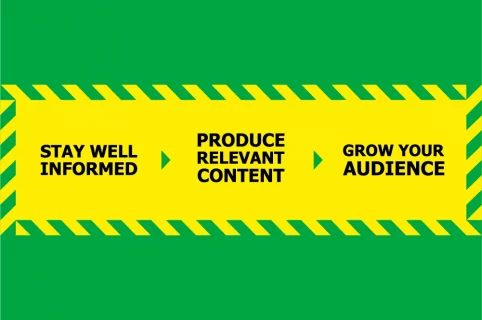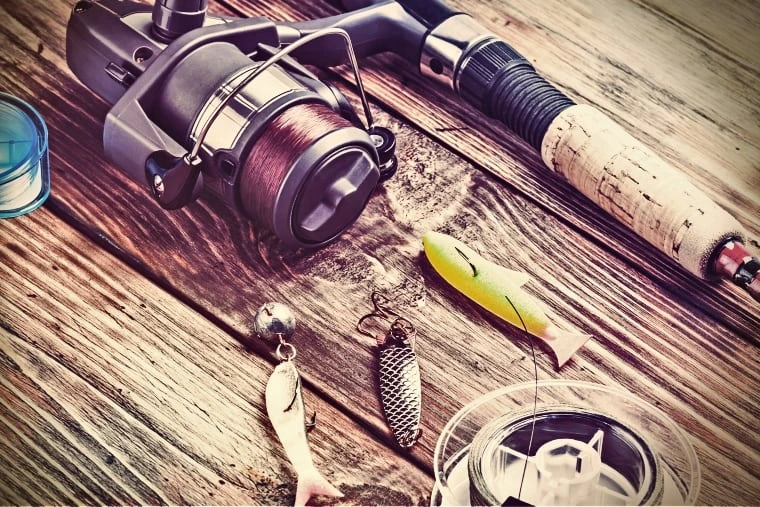
4 mins
OpenContent Marketing In The Time of COVID-19
6 mins
Writing a great headline can often be the hardest part of creating content. How do you capture the reader’s attention without giving too much away? We explain how to write the ideal headlines without resorting to clickbait.
10th July 2018

Clickbait articles are deliberately set out to entice readers by drawing on emotional responses, and they work.
Writing a great headline can often be the hardest part of creating content. The ideal headline draws your readers in immediately. You obviously don’t want to give everything away before they’ve had the chance to read your article, what’s the point of writing an entire article if your readers can get all the information from the headline? But you need to grab the reader and set up their expectations for the piece.
Clickbait headlines have often been drastically sensationalised, and the actual copy isn’t as shocking or groundbreaking as the headline makes it seem. We’re here to explain how you can write the ideal headlines for your articles, that will capture your audience, without resorting to clickbait.
As digital media started taking off, publishers wanted to draw in as many readers as they possibly could. Taking inspiration from radio and TV, clickbait titles were born. In the same way hosts would leave the audience on a cliffhanger before an advert break, editors were looking for ways to ensure that readers would definitely click through to the articles, maximising page visits. “You’ll never guess what happened when…”, “THIS will make you…”, “We can’t get over…” are just snippets of headlines you’ve most likely seen online.
Clickbait articles are deliberately set out to entice readers by drawing on emotional responses, and they work. They focus on these emotional triggers:
Overselling your copy can lead to readers feeling cheated and clicking off your article.
Clickbait headlines usually go overboard with hyperbole, promising readers far more information and advice than is actually available in the main body of text. For example, a clickbait headline could promise the “secret to weight loss”, but the article content could simply be to “eat a balanced diet”—which is hardly a secret. This is rife in spam articles, as well as on publications that should know better.
Overselling your copy can lead to readers feeling cheated and clicking off your article. If all your readers click off your article, this can drastically increase your site’s overall bounce rate. Having a high bounce rate indicates that your business has lost a conversion opportunity, so having the majority of your readers click off your article without navigating through your website means you’ve lost the majority of your opportunities to make a sale. An SEO agency or marketer experienced in Google Analytics can track the pages with the highest bounce rates and advise on how you can reduce this.
Having quality content that engages the reader will encourage users to stay on your website, leading them to the rest of your content as they search for more relevant and informative content. This can also lead to your site establishing a dedicated readership, and an increase in article shares online, which can widen your audience.
This is where writing a headline becomes tricky. How much information should you divulge to your readers without telling them everything? And which element of your article should you explain in the headline? The answer is actually quite simple: Focus on the main point of your article.
Are you answering a query that’s frequently searched for? Then explain how you will answer it in your headline. Examples like “5 ways you can…” or simple how-to guides are efficient ways to answer specific search queries. If your business and website is an authority within the industry, this is one of the easiest ways you can build a readership, while generating excellent content.
If you’re reporting on specific industry data, share this information with your readers in the title, don’t make it a surprise reveal for those who take the chance to click into your piece. Use a key piece of the data in the headline, giving readers a taste of what you’ll be sharing in the article. It’s okay to sensationalise a tiny bit, to build up a hype around your article, but avoid overselling your findings.
You should still be creating that “cliffhanger” aspect in your headlines, as mentioned earlier. A leading title can lead to answers in the subheadings of your article. Use this opportunity to offer more information to your story, giving your readers more of an idea of what your article is about.
While whimsical and punny headlines are more interesting to read, and can help draw in readers, they don’t always work with the article.
While whimsical and punny headlines are more interesting to read, and can help draw in readers, they don’t always work with the article. This could be due to the platform or the nature of your article, as well as the audience you’re writing for. Honest headlines that don’t oversell your copy are best, so be upfront with your readers from the off. Focus on the benefits that reading your article will provide. Rather than saying “You’ll never believe how this company made millions,” try opting for “5 things every entrepreneur should be doing to increase profits”. While both headlines omit the crucial information, the second example explains how reading the article will benefit the reader.
Making titles more personal can also encourage readers. For example, “5 things your business should be doing to increase profits” works by targeting the reader, making it seem like they’re being directly addressed. If you’re going to use this tactic, it’s best to keep it going throughout the rest of the article, and keep that slightly chattier, more personalised tone of voice.
When building your headlines, stay away from generic clickbait catch-phrases, which can immediately turn your readers off. Some of the more famous headline no-no’s include:
When thinking about how to phrase your headline, you may find yourself rejecting certain drafts. Don’t feel you have to do this. Instead, keep a record of your best headline ideas. You may be able to craft the best one using parts of previous drafts.
You may also want to trial different headlines, which is much easier if you send your articles out in a newsletter. Using A/B testing with your email list, send a small portion of your total readers—maybe 10%—one headline, and another 10% a second headline. Whichever headline gets the most clicks should be the headline you use to send to the remaining 80% of your readers.
This tactic can also be used to decide on the final headline for your article, which you can then tailor for social media use, which can really help to boost traffic.
Using A/B testing for your headlines, using your email list.
A keyword could simply be the name of your subject matter, “tax law”, or a key person, like “Lupita Nyong’o”. Having the right keywords in your content is crucial to optimising your copy. Without the right keywords, your customers—and any potential customers—won’t be able to easily find your website. Your keyword/s are what helps search engines find your website but also to tell the reader what the article is about!
Keywords, and effectively optimising your content, can also increase your visibility on Search Engine Results Pages (SERPs). Having the right keywords in your copy from the start, in the headline (and the URL) increases the chance of your article appearing in the News sections of SERPs, as well as in the form of a featured snippet, or on a carousel.
Different keywords carry different values, in terms of search results. You will want to target widely-used keywords. Try checking Google Trends to see how popular different terms are. Your SEO agency or marketing team will be able to do further research into this and provide a list of the most relevant keywords to your website and business, as well as how valuable each keyword is.
Ultimately, headlines are meant to grab your audience and entice them to continue reading your content. Having the right lede for your articles is crucial, as it’s usually the first thing readers will see when browsing your website, or even when exploring SERPs. You want to ensure your headline makes sense, is optimised, and exciting for your readers, without resorting to clickbait.